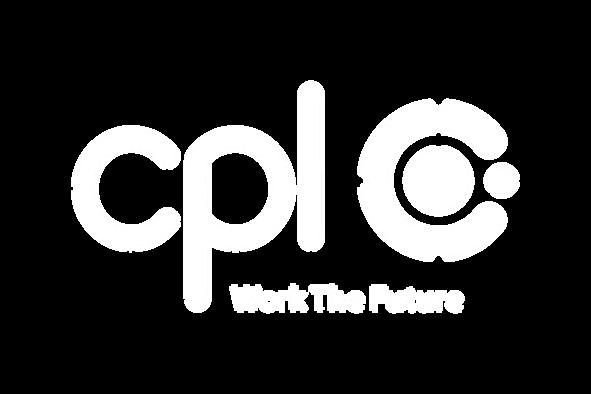Prepared by:
David Murillo,
Giuliana Brayan and
Paula Moreno

Manos Visibles 2025






Prepared by:
David Murillo,
Giuliana Brayan and
Paula Moreno

Manos Visibles 2025





“Diverse teams make better decisions up to 87% of the time, and those decisions generate better results. “Companies in the top quartile for ethnic and racial diversity are 36% more likely to outperform their competitors in profitability. ”


“Diversity is not just a moral obligation, it is a strategic necessity to compete in a global economy. ”
Thomas Kochan, Professor, MIT Sloan School of Management
1.Introduction
Presentation Ethnic talent in the Americas: From exclusion to workplace equality
Manos Visibles and its commitment to managing diverse talent in today's world
2. The Context of Ethnic Labor Mobility in the Americas
Public and private initiatives

3. Executive summary context
Key concepts
Regional context: Afro-descendants and indigenous peoples
Case studies
4. Findings: strategies, practices and chellenges of ethnic headhunters
Headhunters étnicos y casos destacados
Estrategias de reclutamiento y manejo narrativo
}Desafíos y lecciones aprendidas
5. Trends and future perspectuves: a conversation with visible talent
The ethnic talent perspective: challenges and barriers
Strategies from the ethnic talent perspective
The corporate perspective: barriers and strategies
Analysis of the visible hands network: characterization
Trends and future prospects for ethnic talent recruitment
6. Conclusions and recommendations with expanded roadmap and the role of visible talent
Main Conclusions
Strategic Recommendations
Roadmap for promoting racial diversity and inclusion
Key Performance Indicators (KPIs)
7. References
The labor inclusion of Afro-descendant and Indigenous communities in the Americas constitutes a structural challenge that has perpetuated systemic inequalities across the region. Despite progress achieved in recent decades, these communities continue to face significant barriers to accessing the formal labor market a reality that demands deep and coordinated transformation. This study addresses this issue through an innovative lens, combining quantitative and qualitative methodologies to analyze the recruitment practices of ethnic headhunters and their impact on advancing labor equity.
To build a solid conceptual framework, an extensive review was conducted of both academic and nonacademic literature on diversity, inclusion, theories of discrimination, and the role of social networks in the labor market. Data collection included virtual interviews with ethnic headhunters, civil society leaders, and ethnic professionals from countries such as Colombia, Brazil, Panama, and the United States, complemented by document analysis of business plans and organizational reports. This approach enabled the identification of key patterns, strategies, and challenges in ethnic recruitment.
The study also broadened its geographic and analytical scope to integrate a gender perspective, include countries in Latin America and the Caribbean, and consider the African diaspora in Europe and the United States. Technological tools facilitated rigorous and indepth analysis, while the triangulation of results allowed for the construction of a comprehensive vision that seeks not only to describe reality but also to propose transformative strategies.
As experts from Harvard and MIT affirm, diversity is not merely an ethical ideal but also a proven driver of productivity and organizational legitimacy. However, in countries such as Brazil, Colombia, Panama, and the United States, initiatives to reduce labor inequalities have been inconsistent and often insufficient. Although policies such as Brazil’s Quota Law represent significant progress, the disproportionate levels of unemployment and informality among ethnic communities reveal the urgent need for a more intersectional and coordinated approach.
The Commitment of Manos Visibles to Ethnic Talent and Its Network. Manos Visibles has led a comprehensive model for the training and visibility of ethnic talent in Colombia, consolidating a network of more than 28,000 people. This network has stood out for its impact in key areas such as leadership, entrepreneurship, technology, and cultural management, becoming a benchmark in the promotion of talent from Afro-descendant and Indigenous communities. Below is a synthesis of the main results, characteristics, and challenges of this initiative, now in its fifteenth year.
Inequality in access to opportunities. Educational and employment opportunities are concentrated in large cities such as Bogotá, Cali, and Medellín, leaving behind regions with lower economic development, particularly the Colombian Pacific. This has led to significant geographic mobility toward large cities due to the lack of local employment options.
Mismatch with the labor market. There is limited participation of ethnic headhunters within the network and insufficient feedback regarding members’ profiles.
leaders trained in leadership schools with a focus on community innovation, economy, governance, and autonomous development. in fields such as government, management, business creation, MBAs, and cultural management from the country’s top universities.
More than 2,500 with postgraduate education, reflecting a high academic level. 73% 90% 45% women participants.
Afro-descendants and a growing participation of LGTBI people.
Language barrier. Only 20% of members have practical knowledge of English or Portuguese, which restricts access to international markets.
Manos Visibles has demonstrated that it is possible to develop high-level ethnic talent and build transformative networks. However, the success of its model depends on addressing challenges such as the regionalization of opportunities, strengthening interaction among members, and promoting alliances that can systematically dynamize the labor market. In today’s context, where there is increasing backlash against affirmative action and diversity, it is crucial to rethink how this commitment is advanced.
With these improvements, the network has the potential to lead significant change in strategic sectors such as technology, entrepreneurship, and culture, consolidating itself as a key actor in promoting diversity and development in Colombia and the region.
Scholarship funds for master’s and undergraduate programs:
Pacific Power Fund
Pacific Potential Fund
Youth and Peacebuilding Fund
Preparatory Schools of Power and Potential
Leadership schools and organizational strengthening programs, including:
Community Innovation Schools in partnership with MIT
High Government Schools
Economics Schools
DALE (Autonomous Development and Effective Leadership)
Public Health Schools
Cultural and audiovisual management and production, including:
Vení te leo
Ethnic Vanguard
FOCO
Technology, including:
del Naidí
The training promoted by Manos Visibles not only enhances participants’ technical skills but also positions ethnic communities as agents of change in their respective contexts.

The comparative data analysis, together with public and private initiatives, provides a solid foundation for understanding the structural challenges and opportunities surrounding ethnic labor inclusion in the Americas. Globally, Afro-descendant and African communities represent approximately 1.5 billion people, one in every five worldwide (World Bank, 2020). Meanwhile, the Indigenous population reaches 32 million, equivalent to one in every twenty people.
In the Americas, proportions vary considerably: Afrodescendants make up 54% of the population in Brazil, 13.4% in the United States, 10.6% in Colombia, and 9% in Panama. As for Indigenous communities, they represent 12% of the population in Panama, 4.4% in Colombia, 2% in the United States, and just 0.5% in Brazil.
Disparities become even more evident in access to education. In Brazil, only 4% of Afro-descendant youth access higher education, compared to 18% of non-Afrodescendant youth. In Panama, less than 5% of university students come from Indigenous or Afro-descendant communities. Furthermore, parents’ educational level plays a crucial role: among Afro-descendants whose parents have low levels of education, only 52% complete secondary school, while this figure rises to 78% when parents have medium or high education. In Colombia, educational gaps are equally alarming: 10% fewer Afrodescendants and 20% fewer Indigenous students complete secondary school compared to mestizo or white populations. These educational inequalities perpetuate barriers to accessing formal and quality employment.
In the labor sphere, figures reflect deep inequities. In Panama, the unemployment rate among Indigenous communities reaches 18%, more than double the national average (7.4%). In Brazil, the unemployment rate among Afro-descendants is 14.7%, while for the non-Afrodescendant population it is 9.2%. Labor informality also disproportionately affects these groups: 82.6% of Indigenous people in Latin America work in the informal sector, compared to 51% of the general average. In Colombia, 42% of Afro-descendants are employed in informal jobs, 12% higher than the non-Afro-descendant population.
It is important to note that even Afro-descendants with higher education face significant disadvantages. In Brazil and Colombia, the unemployment rate of Afrodescendants with higher education is double that of their non-Afro-descendant peers. This shows that structural racism and discrimination continue to limit equitable access to the labor market, regardless of the level of education attained.
representation in leadership is scarce, with limited initiatives (ILO Report).
informality disproportionately affects Afrodescendants and Indigenous peoples (UNDP, 2024)
than 5% of university students are Afrodescendants (Ministry of Education, Panama)
reported in hiring processes based on ethnic origin (UNDP, 2024)
In Latin America, poverty and structural inequality disproportionately affect Afro-descendant and Indigenous communities, limiting their access to the formal labor market. This situation is deeply rooted in systemic and structural racism, fueled by collective prejudices and racial discrimination. Below are the main figures and facts that highlight this issue:
The labor exclusion of Afro-descendants and Indigenous peoples in Latin America not only perpetuates structural poverty but also reflects deep racial and ethnic inequalities in education, employment, and wages. Addressing these gaps requires intersectional actions and public policies that promote equity, improve access to human capital, and eliminate discrimination in the labor market.


Table 2. Main Initiatives for Ethnic Labor Inclusion
Country Public Policies Private Initiatives
Colombia
National Development Plan 2010–2014. Statutory Law for the Protection of the Afro-Colombian Population (2019).
Brazil
Racial Quota Law (2012). Efficient Brazil Program (2016).
Manos Visibles (Visible Talent). Café Devoción: inclusive practices in its production chain.
Panama
National Plan for Public-Private Social Responsibility and Human Rights (2020–2030). Business Forum on Competitiveness and Inclusion (UNDP, 2024).
Banco do Brasil: increased Afrodescendant representation. Grupo Pão de Açúcar: diversity and racial inclusion programs.
United States
Diversity and Inclusion Executive Order (2019). EEOC: antidiscrimination initiatives since the 1960s.
Nestlé Panama: inclusive hiring practices. Copa Airlines: programs to increase workforce diversity.
Google: increased racial and ethnic diversity. Johnson & Johnson: specific strategies for inclusion.
The data presented underline the urgent need to implement more inclusive and sustainable approaches to reduce structural gaps in the labor market. Public policies and private initiatives highlight the transformative potential of diverse and equitable leadership. However, there is still a long way to go to ensure that these practices become systemic and effective. This chapter lays the foundation for a deeper analysis of the specific strategies that can make a difference in ethnic labor mobility.
When speaking of solutions, it is important to point out that these situations are not exclusive to Colombia or other Latin American countries. In countries such as the United States, access to quality education and formal employment is also affected by ethnic and racial variables; and, as in European countries, nationality itself carries significant weight.
As in Colombia, in the United States the Black population has faced three major challenges in the labor market: the number of jobs, the quality of jobs, and the types of jobs available to Black individuals. Some of the measures taken to address this situation have involved three different actors: the State, the private sector, and the community—which includes civil society, philanthropy, and organizations. The responses of the State in the United States have focused on subsidizing employment programs along with economic development programs in regions with a high Black population and high unemployment rates, as well as establishing policies against racial discrimination in hiring practices.
For their part, companies have focused on strengthening their Diversity, Equity, and Inclusion (DEI) policies, through which they aim to increase the hiring, retention, and promotion of Afro-descendant individuals within their organizations.
The companies most committed to these measures publish annual reports on their progress in diversity and inclusion, in addition to sharing best practices that can be replicated in other organizations. Furthermore, some companies, addressing the educational gap, provide Afro-descendant populations with training and educational programs so that they can develop the skills needed to perform well in the labor market.
Finally, civil society organizations, philanthropy, and other sectors have not only promoted greater advocacy and implementation of diversity and inclusion practices in both the State and the private sector, but they have also recognized the gap separating job offers from the demand among Indigenous and Afro-descendant populations to access them. In this sense, and with the goal of dismantling the myth of the “non-existence of qualified ethnic individuals for positions in the private sector,” organizations have been established in countries such as the United States and Brazil to map ethnic talent and connect it with job opportunities. In the following chapter, some examples of these organizations and how they have worked to impact the integration of ethnic individuals into the formal labor market will be presented.
The United Kingdom offers a valuable context for analyzing policies and strategies that promote labor diversity and inclusion. According to the report Not Bad for Business (LSE, 2022), companies that implement racial diversity strategies achieve superior performance in terms of innovation and productivity. The Race at Work Charter has served as an effective model for measuring and fostering workplace inclusion.
In addition, events such as the death of George Floyd in 2020 marked a turning point in the racial agenda, prompting the private sector to adopt stronger commitments to diversity and inclusion. This international context underscores the need to combine public and private efforts to address structural racism and improve employment opportunities for ethnic groups.
4. Findings: strategies, practices and che
llenges of ethnic headhunters
This chapter focuses on analyzing the recruitment strategies employed by ethnic headhunters, with special attention to those working with Afrodescendant and Indigenous populations. Through case studies of various organizations in Brazil, Colombia, Panama, and the United States, the aim is to identify the main trends, challenges, and opportunities in this field. The analysis will explore business models, recruitment methodologies, networking practices, and the impact of these professionals on promoting diversity and inclusion in the workplace.

Impact: Has worked with more than 50 companies to implement racial inclusion strategies.


Impact: Has connected more than 2,000 Afro-descendant candidates with employment opportunities.

Impact: Has financed initiatives benefiting more than 1,200 people in rural regions.
Impact: Has helped more than 300 African American executives access strategic positions in Fortune 500 corporations.

Impact: Has diversified executive teams in more than 50 companies in the U.S.

Impact: Its network includes more than 1,500 employers and has helped tens of thousands of candidates access equity-promoting jobs.

Impact: Has facilitated more than 200 successful connections between companies and Afro-Colombian candidates.
Impact: Has successfully placed Indigenous candidates in key business sectors, expanding access to formal jobs.
Impact: Has developed partnerships with multinational companies in Panama, highlighting the potential of underrepresented communities.
Impact: Has been recognized for its hybrid model combining mentoring and direct access to opportunities in engineering and technology sectors.
Impact: Has contributed to raising the visibility of Indigenous and Afro-descendant communities through international collaborations that connect design and social justice.

Impact: Has worked with leading technology and pharmaceutical companies in Europe to increase ethnic representation in strategic positions.
Impact: Has advised more than 100 British companies, achieving 40% adoption of diversity metrics in their financial reports.
The latest examples described highlight the diversity of approaches that ethnic headhunters implement to foster labor inclusion. In Panama, firms such as Panama Executive Search have led local efforts to integrate Indigenous communities into the formal economy. In Europe, initiatives like Ethnicraft demonstrate how diversity can be integrated beyond recruitment, promoting social justice in creative industries. Finally, actors such as DiversityJobs in the United States and Reach for Talent in South Africa have extended the conversation on racial equity to a global level, underscoring the need for integrated and culturally sensitive solutions.
1.Community Networking. Ethnic headhunters build networks with universities, professional associations, and community leaders to identify talent within Afrodescendant and Indigenous communities. In Brazil, platforms such as Carreira Preta and Empregue Afro have developed strategic alliances with public and private universities, providing direct access to a diverse talent pool. These networks are crucial for overcoming the geographical and economic barriers faced by many candidates.
2. Mentorship and Professional Training. Programs such as those offered by BECI and Potencia Afro help candidates prepare for the corporate work environment, covering everything from technical skills to cross-cutting competencies such as leadership. They also include interview simulations and soft skills training, key elements for placement in companies with high-performance standards.
3. Competency-Based Evaluation Headhunters such as Diversity Search Group emphasize an assessment approach that prioritizes candidates’ transferable skills rather than traditional requirements such as degrees from prestigious universities. This approach, in addition to being more inclusive, allows companies to uncover hidden talent.
4. Training for Companies. Headhunters also implement programs to raise awareness and train companies that receive diverse talent. This support includes workshops on racial equity, consulting for the creation of Diversity, Equity, and Inclusion (DEI) policies, and follow-up to ensure cultural adaptation. Empregue Afro, for example, offers specific modules on the importance of inclusive leadership and how it impacts profitability.
1. Afrofuturism and Narrative Empowerment. Platforms such as Preta Hub are revolutionizing the way Afro-descendant populations are perceived, positioning them as protagonists in the creative economy. Through Afrofuturism, new narratives are being built that not only redefine Black identity but also link cultural heritage with entrepreneurship, innovation, and the future. This vision strengthens identity pride while paving the way for more inclusive business models.
2. Accessibility and Flexibility. Inclusive practices, such as interviews at flexible times and processes designed to adapt to diverse economic and geographic contexts, are breaking down barriers for thousands of Afrodescendant and Indigenous candidates. These strategies ensure that talent is not lost due to logistical obstacles, opening real opportunities for labor inclusion.
3. Advocacy and Coordination. Ethnic headhunters have succeeded in positioning employability as a key component in the fight for racial equity. Initiatives such as Feria Preta in Brazil or BECI’s mentoring programs have shown that improving access to employment generates multiplier effects in social justice, economic empowerment, and community cohesion.
1. Affirmative Action in the Private Sector. While affirmative policies have gained ground in the public sector, their adoption in the corporate arena remains limited. Fear of criticism or perceptions of favoritism lead many companies to avoid these commitments. In fact, according to the IDB, only 30% of companies in Latin America consider applying affirmative action policies.
2. Educational Gaps and Academic Training. The lack of access to quality secondary education directly affects the competitiveness of Afro-descendant and Indigenous candidates. According to a Citibank report, these groups often score lower in technical skills, making it difficult for them to enter key sectors such as technology or finance.
3. Perception of High Cost. Many companies still view the implementation of a racial equity agenda as an expense rather than an investment. The necessary adjustments in training, processes, and monitoring are perceived as too costly, which hinders collaboration with headhunters specialized in diversity.
1.Building Strong Networks and Highlighting Successful Afrodescendant Leaders. Creating solid networks and showcasing successful Afro-descendant leaders has proven to be a highly impactful strategy. Initiatives such as Empregue Afro have managed to connect talent with international opportunities, generating a multiplier effect in access to resources and information.
2. Knowledge Management. Documenting experiences, systematizing lessons learned, and sharing best practices allows inclusive models to scale. According to McKinsey, organizations that integrate effective knowledge management increase the efficiency of their inclusion processes by 40%.
3. Inclusion as a Business Strategy, Not Just Regulation. Both the IDB and JP Morgan agree that companies incorporating diversity as a strategic axis rather than merely a legal obligation experience higher levels of innovation, profitability, and adaptability to change.
4. Sustainable Organizational Culture. Beyond recruitment, the true success of diversity and inclusion lies in building equitable work environments. This involves creating internal affinity groups, Employee Resource Groups (ERGs), and establishing concrete indicators to monitor progress toward racial equity.
The progress of ethnic headhunters has been crucial in transforming the labor market toward fairer and more diverse models. Their strategies ranging from mentoring and corporate training to community engagement have proven to be effective tools in dismantling structural barriers. However, to consolidate lasting transformation, the coordinated commitment of companies, governments, and civil society is indispensable. This analysis highlights not only their achievements but also the enormous opportunities that exist to expand their impact in the global labor arena.
In an increasingly diversity- and inclusion-conscious labor market, the Visible Talents represent a group of leaders and professionals committed to transforming social and economic structures through racial equity. Through their participation in Manos Visibles programs, these leaders have not only achieved individual transformations but have also generated broader social impact.
This chapter compiles a conversation with some of the most prominent Visible Talents, who drawing from their diverse trajectories share their perspectives on the barriers faced by underrepresented ethnic groups in the professional sphere, as well as the strategies they are implementing to overcome them.
The conversations held this year as part of the Visible Talent program activities consistently addressed the structural challenges faced by individuals from ethnic communities in accessing leadership roles in both the public and private sectors.
One recurring theme has been the perception of discrimination in recruitment processes. Talent from ethnic communities continues to face unconscious biases, which often result in the exclusion of their candidacies for decision-making positions, generating distrust in both the processes and the organizations themselves.
Another recurring issue has been the lack of representation of ethnic groups in leadership positions. The absence of role models in positions of power and decision-making creates a trust gap in employment systems, discouraging many professionals from applying for high-responsibility roles. This lack of visibility of ethnic talent in strategic positions perpetuates the disconnect between companies and diverse communities.
Additionally, the importance of organizational culture has been highlighted in the integration of ethnic talent. Companies must understand that beyond hiring diverse personnel, it is necessary to build inclusive environments where every individual is valued and respected, regardless of ethnic background. The lack of support networks and limited representation of their interests within companies have been identified as additional barriers hindering ethnic talent from reaching leadership positions.
Despite these challenges, the conversations also revealed various strategies and approaches to advance toward a more inclusive and diverse environment.
One key point has been the importance of transparent information about companies’ diversity and inclusion policies. Organizations that openly publish their commitments to inclusion and diversity generate trust among professionals from ethnic communities, who seek clarity about real opportunities for development and growth.
Another emphasis has been on strengthening support networks for ethnic groups. Creating spaces for connection, both inside and outside companies, is essential for facilitating the integration of these groups into the labor market. Organizations must build bridges that enhance visibility and collaboration by providing mentors and leaders within the company who can guide and support ethnic professionals in their career paths.
Investment in skill development has also emerged as a key theme. Visible Talents highlighted the need to create training and competency-building programs that enable candidates from ethnic communities to improve their employability and become more competitive in the market. This includes everything from leadership and technical training programs to strengthening soft skills such as effective communication and team management.
Similarly, the importance of mentorship and continuous support throughout the professional process has been stressed. The creation of both formal and informal mentoring programs is essential to ensure that young ethnic talents can find guidance and direction in their professional development.
From the perspective of multinational companies, barriers and strategies have also been central topics of debate. In several conversations this year with companies such as Fundación Andi, Johnson & Johnson, BBVA, Pfizer, and HAYS, the lack of diversity within recruitment teams was highlighted. The absence of diverse recruitment teams perpetuates unconscious biases in selection processes, making it harder to identify talent from underrepresented ethnic groups.
These companies have also acknowledged cultural resistance within many organizations, which can be a significant obstacle to implementing effective diversity policies. Changing mindsets and internal structures is a process that requires time, education, and genuine commitment at all levels of the organization. Nevertheless, many of these companies have begun implementing awareness and training strategies to promote acceptance of diversity and demonstrate the benefits of inclusive teams.
In this context, diversifying recruitment teams has emerged as a key strategy. Companies stressed the need to include people from different backgrounds in recruitment teams to better reflect population diversity and more effectively identify ethnic talent. In addition, these organizations expressed the need to establish strategic relationships with universities and community organizations that work directly with ethnic groups, in order to create more inclusive recruitment pipelines.
Another important theme that emerged is inclusive marketing. Companies are increasingly aware of the importance of using inclusive and diverse language in all communications, especially in job postings and recruitment campaigns. This type of marketing not only helps attract diverse talent but also demonstrates the company ’ s commitment to equity and inclusion.
Finally, impact measurement has been identified as a fundamental strategy for evaluating progress in diversity and inclusion. Companies have begun setting clear metrics to measure the effectiveness of their inclusion policies, which allows them to make adjustments and continuously improve their strategies.
The conversations with Visible Talents and companies committed to diversity reflect both the persistent challenges and emerging strategies for achieving effective inclusion of ethnic talent in the labor market. Barriers related to discrimination, lack of representation, and cultural resistance remain significant, but the proposed strategies— such as transparency in policies, strengthening support networks, investment in training, and diversification of recruitment teams—offer clear pathways toward greater equity.
This year ’ s conversations also revealed that companies such as Fundación Andi, Johnson & Johnson, BBVA, Pfizer, and HAYS are increasingly committed to creating inclusive work environments. They are not only adopting awareness and training strategies but also implementing changes in recruitment and talent evaluation processes. To achieve true inclusion, these companies are recognizing that commitment to diversity is not just a matter of social justice, but also a key strategy for sustainable development and innovation.
The inclusion of underrepresented ethnic groups is not just a corporate policy goal, but a strategic necessity for organizations seeking to remain competitive, innovative, and relevant in a globalized world. The joint actions of Visible Talents, companies, and communities are laying the foundation for a more inclusive and diverse future in the labor market.
As labor dynamics evolve and diversity becomes a key factor in corporate strategy, emerging trends around ethnic talent recruitment reflect a focus on genuine inclusion and the creation of equitable opportunities. In this context, both ethnic talent and companies seeking to diversify their teams have clear expectations about what ethnic headhunters must offer. The following are the main trends and perspectives identified, both from the perspective of ethnic talent and from companies in the process of learning about diversity.

1. Trust and Empathy: Candidates expect personalized and respectful treatment from headhunters, who must demonstrate a deep understanding of their experiences, challenges, and cultural context. This trust-based relationship is crucial to overcoming historical barriers and creating an environment where talents feel validated and understood.
2. Market Knowledge: Ethnic talent seeks headhunters with solid and up-to-date knowledge of the labor market. This includes an accurate understanding of available opportunities in companies that value diversity, as well as the skills companies are seeking in these candidates.
3. Strong Networks: The networking capacity of headhunters plays a key role. Talents expect to be connected with companies committed to diversity. Therefore, a headhunter must have access to a wide range of companies that promote inclusive work environments.
4. Mentorship and Professional Development: Beyond simple job placement, candidates value continuous guidance. Mentorship throughout the job search process is essential, as is professional development to prepare candidates for long-term success.
5. Confidentiality: Protecting personal information is a priority for talents, who expect headhunters to guarantee full confidentiality at every stage of the selection process.

1.Experience in Diversity: Companies are looking for headhunters specialized in identifying and attracting talent from underrepresented groups. This requires a deep knowledge of social and cultural dynamics, as well as the ability to recognize the capabilities and potential of these candidates.
2. Focus on Organizational Culture: Companies value not only the technical skills of candidates but also their ability to adapt culturally to the organization. Headhunters must evaluate this aspect and provide candidates who are not only technically competent but also aligned with company values.
3. Commitment to Diversity: Companies expect headhunters to be committed to building diverse teams. This commitment must be visible and tangible, not only in recruitment processes but also in the strategic guidance that headhunters can offer to foster an inclusive culture.
4. Data and Metrics: The ability of headhunters to measure the impact of their actions is increasingly valued by companies. Presenting data that show the diversity of candidates presented and the outcomes of selection processes builds trust and transparency.
The emerging trends and future perspectives for recruiting ethnic talent suggest an evolution of the labor market toward a more inclusive and equitable model, where both companies and headhunters must play an active role in promoting diversity and inclusion. By specializing and adapting to new market demands, ethnic headhunters can become key agents in creating real and sustainable job opportunities for ethnic talents, while companies must commit to building truly diverse and inclusive organizational cultures. In an ideal scenario, all stakeholders will work together to create a labor market that is fairer and more accessible for all.

recommendations with
expanded roadmap and the
e of visible talent
Main Conclusions
The research confirms that ethnic headhunters are key agents in promoting diversity and racial inclusion in the labor market. However, their impact is conditioned by a series of structural barriers, cultural narratives, and business practices. The most notable conclusions are:
Persistent gaps in representation and leadership
Despite the efforts made, Afro-descendant and Indigenous communities remain underrepresented in strategic and leadership roles within companies. Data collected indicate that less than 5% of executive positions in Latin America and the Caribbean are held by individuals from these communities.
Importance of networks and strategic alliances
Ethnic headhunters collaborating with universities, community associations, and progressive companies have achieved significant results by building diverse talent pipelines, but these networks are still limited in scope and sustainability.
Need for corporate awareness
Cultural resistance within companies continues to be a major obstacle. Many organizations see diversity as a legal obligation or quota rather than a strategic element for growth.
Lack of clear metrics and disaggregated data
The absence of consistent indicators to assess progress in diversity and inclusion makes it difficult to measure impact and continuously improve strategies.
Access barriers for ethnic talent
Prejudices and stereotypes persist, creating perceptions of discrimination and discouragement among ethnic candidates. Combined with the lack of professional networks and specific skills, this limits their ability to compete in formal labor markets.
Based on the findings, the following recommendations are addressed to key stakeholders: For Ethnic Headhunters
F
Incorporate racial diversity and equity policies: Companies must develop clear policies that include specific hiring targets for underrepresented groups, along with metrics to evaluate their impact.
Expand community networks: Headhunters should consolidate alliances with universities, NGOs, and companies committed to diversity to broaden access to ethnic talent. Examples such as Carreira Preta in Brazil and Potencia Afro in Colombia demonstrate the impact of these networks.
Develop mentoring programs: Create specific mentoring programs to support candidates from opportunity identification to workplace integration. The experience of BECI in the United States can serve as a model.
Implement inclusive technology: Use digital tools that reduce bias in the selection process, such as competency-based evaluation systems and AI platforms designed to identify diverse talent.
Increase visibility of role models: Promoting success stories of Visible Talents can help change traditional narratives and position Afrodescendant and Indigenous communities as key agents of business innovation.
Training in inclusion and equity: Implement workshops and awareness programs for all organizational levels, promoting the elimination of unconscious bias and fostering an inclusive corporate culture.
Integrate DEI as corporate strategy: Diversity, Equity, and Inclusion (DEI) should be considered fundamental elements of business strategy. According to McKinsey & Company, companies with high diversity in executive teams are 36% more likely to outperform competitors.
Participate in inclusion forums and networks:
Join global initiatives such as the Race at Work Charter in the United Kingdom or create regional networks in Latin America to share best practices and resources.
Advocacy and political influence: Advocate for laws and public policies that promote racial equity, such as the Quota Law in Brazil, which has increased representation in public universities and companies.
Strengthening local capacities: Work with communities to develop technical training and soft skills programs aligned with labor market demands.
Document and share lessons learned: Systematize experiences and success stories to build collective knowledge that inspires and guides future actions.
For Governments
Generate tax incentives for inclusive companies: Design programs that reward companies adopting inclusive practices and achieving specific diversity goals.
Create and maintain disaggregated databases: Invest in the collection and analysis of data on ethnic participation in the labor market, providing information to guide public and private policies.
Implement education and awareness programs: Promote initiatives in the educational system and workforce training that reduce structural racism and increase opportunities for Afro-descendant and Indigenous communities.
Foster applied research: Fund studies exploring the economic and social benefits of workplace diversity, expanding the evidence on the positive impact of inclusive policies.
Diversity and racial inclusion in the labor market are not only matters of social justice but also of economic competitiveness and sustainability. This study underscores the importance of coordinated action between headhunters, companies, civil organizations, and governments to transform the labor landscape in the Americas. Implementing these recommendations will move us toward a more equitable future, where all talents regardless of ethnic background have the opportunity to thrive and contribute to collective development.
This roadmap incorporates specific actions that Manos Visibles can lead through its Visible Talent strategy, aligning its services, networks, and capacities with the needs identified in this study. Actions are organized into short-, medium-, and long-term goals, integrating Key Performance Indicators (KPIs) to measure progress.
Short Term (6–12 Months) Objective: Consolidate the operational and strategic foundations of racial inclusion in the workplace.
Facilitate workshops using materials based on AfroInnova studies
Present success stories of talents placed through its internship programs
Integrate profiles of graduates from the Management Schools and participants of leadership programs.
Generate monthly reports on platform activity and results achieved.
Promote the Visible Talent agenda in national and international forums. Document and publish an initial report with recommendations for key stakeholders
Produce audiovisual content highlighting success stories. Engage partner companies to share available vacancies.
Expansion of the internship program
rs) Objective: Strengthen strategic alliances and measure the impact of inclusion actions.
Develop a mentorship system with graduates from the Management Schools to support interns Conduct quarterly evaluations of labor impact and employer satisfaction.
Coordinate the center with contributions from AfroInnova and academic partners such as CESA Publish studies on employability and diversity trends in Latin America.
Promote virtual and inperson workshops with a focus on measurable outcomes.
Establish certifications for companies completing the program
)
Internationalization of
the Visible Talent Network
Objective: Transform recruitment and racial inclusion practices into sustainable and scalable standards.
Develop relationships with similar programs such as Carreira Preta in Brazil and DiversityJobs in the United States.
Create a map of strategic alliances in the region.
Document the economic benefits of labor inclusion to strengthen advocacy efforts. Advise public entities on the implementation of these policies.
Engage experts from the Visible Talent network to contribute data and analysis. Distribute the report in business and government forums.
The active participation of Manos Visibles, in collaboration with companies, NGOs, and governments, is essential to transform labor dynamics in the region. This roadmap seeks not only to address current barriers but also to establish sustainable standards that can serve as a global reference for promoting racial diversity in the workplace.
Creation of 3 international alliances


